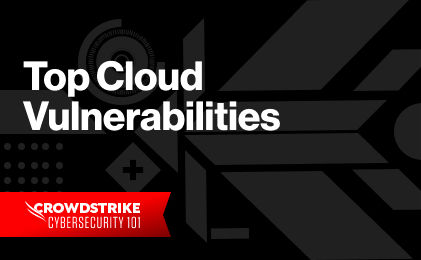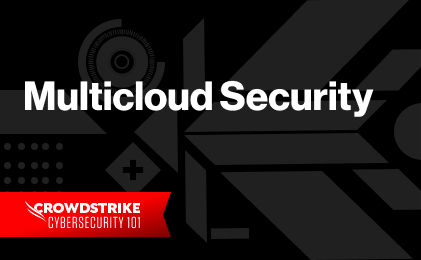Understand CNAPPs with Our Guide
Understand CNAPPs with Our Guide
What is multi-cloud vulnerability management?
Multi-cloud vulnerability management is the continuous process of identifying and remediating security vulnerabilities across all your cloud environments, whether they’re public, private, or hybrid.
By taking this proactive approach to stay ahead of threats, you can prevent data breaches, reduce financial risks, and ensure compliance with laws and regulations. In addition to helping you patch up weaknesses, vulnerability management helps you continuously strengthen your security defenses.
How is vulnerability management in the cloud different from traditional setups?
In the cloud, vulnerability management faces unique challenges not seen in traditional on-premises setups. Cloud services are ever-changing, constantly provisioning and deprovisioning ephemeral resources to meet scaling needs. Unlike traditional IT environments with static assets, cloud environments are dynamic, with services and configurations that frequently change. Because cloud environments are so dynamic, security teams require a more automated and integrated approach to effectively tracking and securing assets.

The Schunk Group
Read this customer story and learn how The Schunk Group, an international high-tech company, protects its IT Infrastructure with cloud-native CrowdStrike Security.
Read Customer StoryCommon vulnerabilities in multi-cloud environments
What are some of the most common vulnerabilities that multi-cloud environments exhibit?
Some examples include:
- Incorrect cloud storage permissions
- Misconfigurations within identity and access management (IAM) controls
- Open or overly permissive network traffic and security settings
- Inadequately secured APIs
In addition, using more cloud providers means managing more cloud account credentials, increasing the risk of compromised credentials and unauthorized access to cloud accounts.
The first step toward a strategic approach to multi-cloud vulnerability management is understanding these common vulnerabilities.
Challenges in multi-cloud vulnerability management
Some of the major challenges for multi-cloud vulnerability management include:
1. Multi-cloud environment complexity
When enterprises work not only in the cloud but across multiple clouds, this takes the complexity of vulnerability management to another level. Each cloud provider runs with its own unique set of tools, security protocols, and configurations. This can lead to a fragmented security approach, as IT teams must juggle multiple processes and tools.
The complexity of this fragmented approach makes it difficult to maintain a consistent security posture across all platforms, increasing the risk of vulnerabilities.
2. Inconsistent security policies across platforms
With each provider in a multi-cloud environment operating its own security framework, formulating a cohesive security strategy that harmonizes diverse policies is a daunting task. And where there are inconsistencies in policy, there are also security gaps.
3. Lack of visibility and control
With assets spread across different cloud environments, gaining a clear and comprehensive view of your entire attack surface is a complex endeavor. Without comprehensive visibility, you are severely hamstrung in your ability to detect and respond to threats in a timely manner.
These significant challenges underscore the need for more integrated and sophisticated tools and strategies for multi-cloud vulnerability management. Let’s consider what you need to be effective.
Effective vulnerability management in multi-cloud environments
Vulnerability management in multi-cloud environments is a structured process that includes four key steps: discover, assess, prioritize, and remediate. This approach ensures comprehensive identification, evaluation, and mitigation of vulnerabilities across various cloud platforms. With this in place, enterprises can enjoy the benefits of working in multiple clouds while maintaining a strong security posture.
Step #1: Discover
This initial step is about gaining complete visibility of the attack surface across the multi-cloud environment. It involves identifying all assets, including endpoints, internet of things (IoT) devices, workloads, accounts, and applications. Asset discovery encompasses all infrastructure, including multi-cloud, on-premises, private cloud, or hybrid cloud.
It is only after comprehensive discovery of all your assets that you will have deep visibility into your assets and the external attack surface that malicious actors will target.
Step #2: Assess
After discovering assets, the next step focuses on evaluating the state of security for each asset. Where are the vulnerable points in your system? This step finds security misconfigurations in your hosts and networks that expose your system to threats. These vulnerabilities are then cross-referenced with up-to-date threat intelligence to determine which ones are being actively exploited by cyberattackers.
Step #3: Prioritize
Not all vulnerabilities present an equal level of risk. Determining risk depends on factors including ease of exploitability, mitigation measures in place, and business impact. CrowdStrike Falcon® Exposure Management uses AI/machine learning (ML) engines trained on the latest threat intelligence to prioritize your vulnerabilities.
After prioritizing your risks, you can see a dashboard with all your vulnerabilities so you know how to move forward with remediation.
Step #4: Remediate
This final step involves taking action to address the identified vulnerabilities. Actions may include applying security patches or making configuration changes. In addition to providing a clear prioritization of vulnerabilities to remediate, Falcon Exposure Management can coordinate automated response actions through its integration with CrowdStrike Falcon® Fusion security orchestration automation and response (SOAR).
With the complexity and scale of multi-cloud environments, manual processes for detecting and remediating security vulnerabilities are inadequate, time-consuming, and error-prone. For this reason, enterprises are turning to all-in-one, automated solutions that leverage the latest in AI-native technologies.
Leveraging the Falcon platform for enhanced multi-cloud vulnerability management
Organizations moving from on-premises or single-cloud setups to multi-cloud environments face additional complexity and challenges, especially in the area of cybersecurity. Maintaining a unified security posture in the face of multiple providers — each with its own security framework, tools, and policies — can sap the resources of already overburdened IT and security teams. Comprehensive visibility across clouds is difficult to obtain, and securing digital assets with manual processes is unwieldy and unreliable.
The CrowdStrike Falcon® platform is a powerful ally that can help address these challenges. Its ability to deliver consolidated vulnerability management across cloud providers ensures robust and comprehensive protection across your entire infrastructure. By coupling its asset discovery capabilities with AI-native threat intelligence and vulnerability prioritization, the Falcon platform helps organizations understand where they are at risk and what to tackle first.

Best Practices to Secure Cloud-Native Applications
Download this white paper to discover the threats facing cloud applications and the critical steps you can take to ensure speed, efficiency and accuracy in protecting your cloud-native applications.
Download Now






